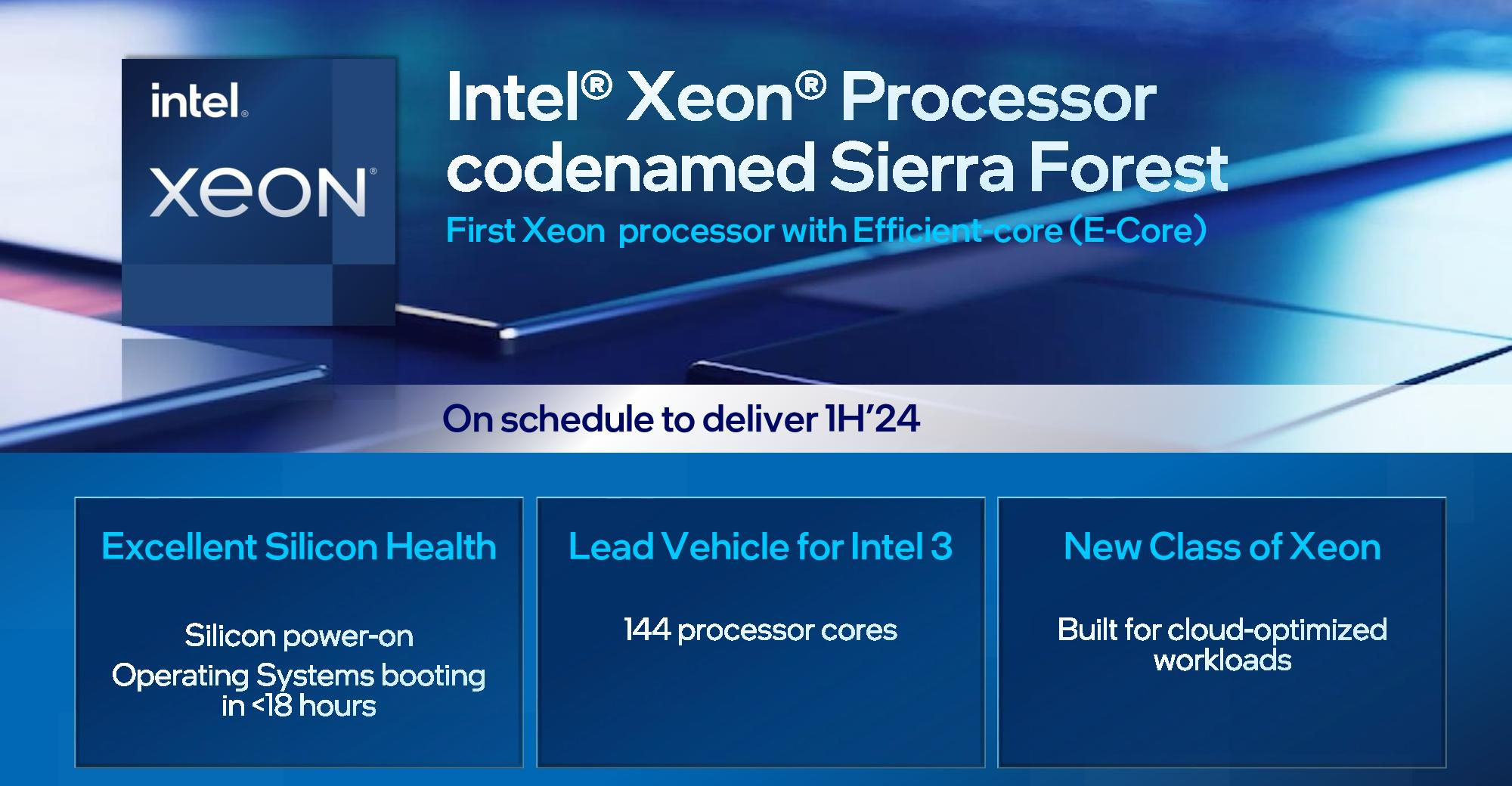The first officially unveiled after lots of rumours is Sierra Forest: This Xeon architecture has up to 144 cores and is built on Intel's 3nm process node. Launches 2nd half of 2024. Intel says it's already fabricated and booted up a server with test Silicon of this architecture on 3nm.
But before that Intel will also be refreshing it's just launched Saphire Rapids CPUs later this year. This is called Granite Rapids and is available in in the 2nd half of 2023. These CPUs support DDR5-8800 RAM out of the box.
And then in 2025 Intel launches Clearwater Forest. Not confirmation on core counts; whether or not it's also 144 cores like Sierra Forest or if it's increased but Intel confirmed the process node - built on Intel 1.8nm

 videocardz.com
videocardz.com
But before that Intel will also be refreshing it's just launched Saphire Rapids CPUs later this year. This is called Granite Rapids and is available in in the 2nd half of 2023. These CPUs support DDR5-8800 RAM out of the box.
And then in 2025 Intel launches Clearwater Forest. Not confirmation on core counts; whether or not it's also 144 cores like Sierra Forest or if it's increased but Intel confirmed the process node - built on Intel 1.8nm

Intel confirms Xeon "Sierra Forest" with 144 Efficient cores launches in the first half of 2024 - VideoCardz.com
Intel confirms its Xeon roadmap for the next two years Intel remains committed to their plans to launch four new Xeon architectures in 2 years. Intel Data-Center Xeon roadmap, Source: Intel During the Data Center and AI Investor Webinar, Intel has confirmed its plans how to tackle the upcoming...
Last edited:





